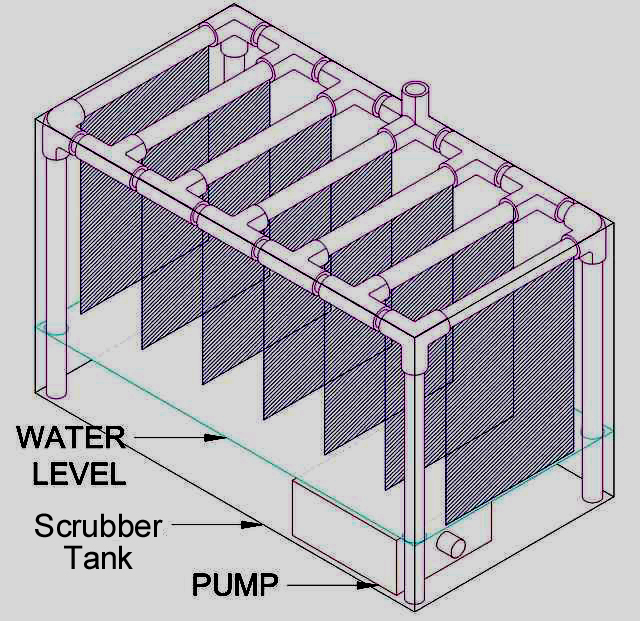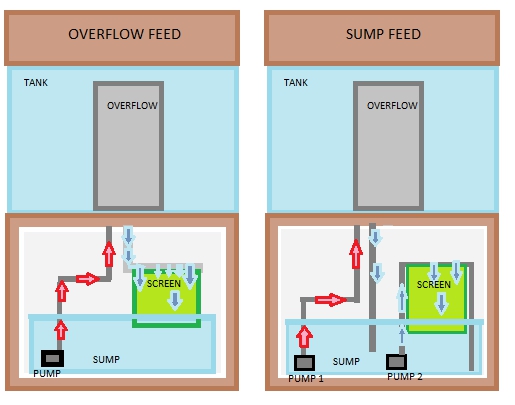Well in your northern area, a rooftop one is not an option. So a layered setup would work, similar to this:

Very strong lights would go on the sides of this scrubber tank, and this would allow easy raising/lowering of the screens for cleaning. If you did not use a clear-walled tank, the lights would have to go on the top, and would have to be moved for cleaning.
For 50k gal, figure on 50k square inches. I'd divide this into 50 screen, 1000 sq in each (about 30" square), with about a foot between each screen. A custom acrylic-walled trough of 50 feet would hold them all.

Very strong lights would go on the sides of this scrubber tank, and this would allow easy raising/lowering of the screens for cleaning. If you did not use a clear-walled tank, the lights would have to go on the top, and would have to be moved for cleaning.
For 50k gal, figure on 50k square inches. I'd divide this into 50 screen, 1000 sq in each (about 30" square), with about a foot between each screen. A custom acrylic-walled trough of 50 feet would hold them all.





